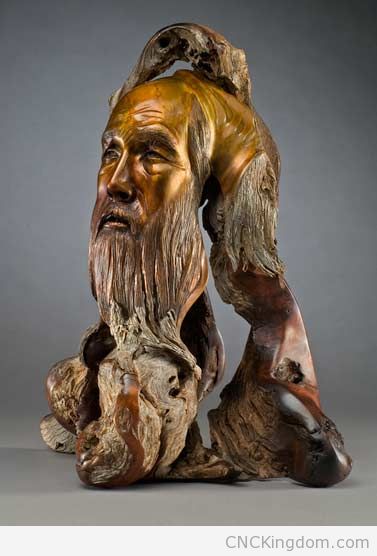Christopher White, sculpture artist at Parables in Wood (USA)
I truly believe that as 3D printers progress in abilities and resolution, people like Christopher will find a whole new market for his designs – what he does with his hands is spectacular, but they could be easily 3D scanned and 3D printed in steel to create mind blowing pieces of art at any scale!
Right now, the costs involved with 3D printing are high but soon people of all abilities will be able to affordably sculpt their designs using digital clay that doesn’t require an industrial workstation and sell their prints online both digitally and physically. A whole new world is about to open in a few years and who knows… talented artists like Chris might be the first to take full advantage of these possibilities and make a fortune in the process! Like a painter, there is no reason why he couldn’t sculpt once and sell a thousand 3D prints of his work, numbered for collectors!
You can find his site at http://JChristopherWhite.com but be warned, you’ll be incredibly inspired to cut down your neighbor’s tree and start carving away!
You studied wildlife management in university but then jumped into 12 years of art, sculpture and drawing. Did you always want to be an artist or did you discover this passion while in university?
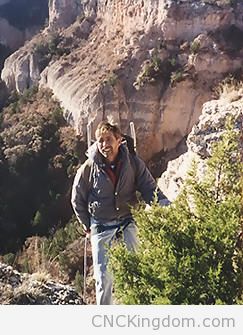 I always wanted to carve wood but didn’t think I could make a living at it. I figured if I got a degree in range and wildlife management, I could get a job with the forest service sitting in a fire tower where I could carve wood to my heart’s content. Two years into university, I decided to fore go the fire tower and pursued sculpting full time.
I always wanted to carve wood but didn’t think I could make a living at it. I figured if I got a degree in range and wildlife management, I could get a job with the forest service sitting in a fire tower where I could carve wood to my heart’s content. Two years into university, I decided to fore go the fire tower and pursued sculpting full time.
You have some incredible wooden sculptures, it’s incredible how precise and creative they really are. Having no hand-eye coordination which is why I use CNC machines for my creations, how long does it take for you to sculpt your designs? Do you see the design in the wood and just remove material around it or is it a more planned and systematic approach?
The most successful sculptures are the ones I can see most clearly in the wood. Of course you remove everything that doesn’t look like your subject, but it really does help to see the finished piece in the wood first.
The ones I enjoy doing the most are the sculptures where I have a clear image and a message to put with it in mind before I have the wood. Those require going to Texas and hunting for just the right tree, I really have to depend on the Lord to guide me, the ranch I hunt wood on is 165,000 acres, the trees are scattered throughout the canyons.
Not only does the tree have to fit the idea, but it must be dead, but not too weathered.
I guess I like a good challenge.
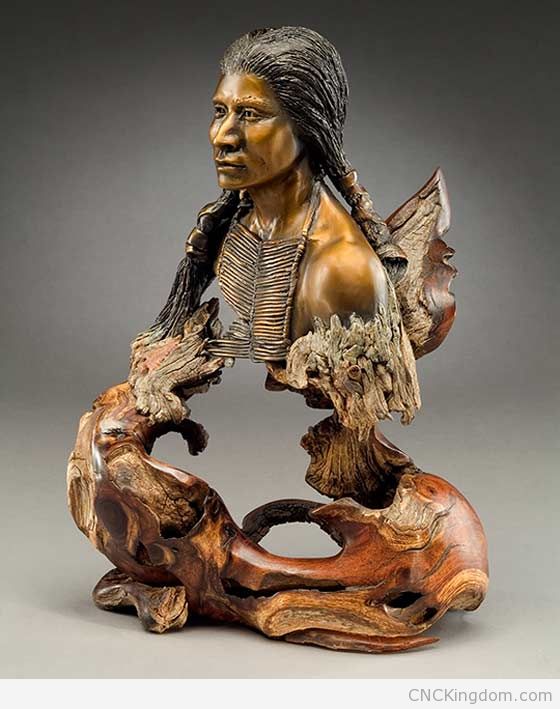
How much of your sculptural abilities were enate and how much did you teach yourself to do? Were you always able to make such incredible work or was it a long struggle to get to this level of mastery?
I truly believe all talents are a gift from God. Learning to use that talent is the trick. My parents were very encouraging, they told me I could do anything I put my mind to, I guess I believed them. I started out carving little faces out of the blackboard chalk in school. That aspect of my career ended when the Nuns caught me. After high school I found soapstone and carved faces on pipes, got a lot of encouragement, mostly in the form of “oh wow”, or “trippy”, I’ll leave it up to the reader to guess what was smoked in the pipes.
A few years later I saw a peacock walking into the wind. The way the wind played through the feathers was beautiful, so I attempted to replicate it in wood (not the peacock as much as the feeling I had watching the peacock) This was my third sculpture, it is 54″ in length. Second Chance (http://jchristopherwhite.com/second%20chance.htm) Nobody taught me how to do that, the ability was in there, the challenge brought it out. Thirty five years later, I could do the same sculpture in a forth of the time. That says something about practice and learning from my mistakes.
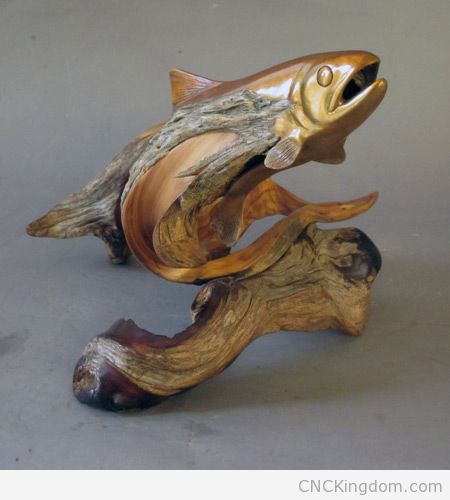
You now help teach others your skills, is it possible for anybody to have your level of sculptural abilities or is this just something you either have or don’t regardless of how much time you spend practicing?
I have taught hundred of student over the years. The principles of movement and design can be learned by anybody, some learn faster than others. Each student expresses the principles in their own unique way. There are varying degrees of gifting as far as being able to envision sculptures, some students require a very detailed pattern, model or drawing, others don’t. Time and practice help in the achievement of success in anything, sculpture is no different. Of the hundreds I have taught over the years, only a handful could look at a piece of wood and see a finished sculpture in it. All of them succeeded in getting it freed.
What are some common mistakes that you see in students that prevent them from achieving the best design they could out of any given piece of wood?
Mistake # 1 Fear of taking off too much wood.
Mistake # 2 Taking off too much wood.
Mistake # 2 rarely happens, mistake # 1 almost always. Lack of confidence in any form is a real hindrance. Confidence builds with experience.
You’ve made a lot of incredible wooden sculptures, which ones are your favorites and why?
My favorite sculpture? That is a question I really don’t have an easy answer for. I really like the message of “Final Kiss” (http://www.jchristopherwhite.com/final%20kiss.htm) and love the movement in “Place of Offering” (http://www.jchristopherwhite.com/place_of_offering.htm). It really depends on the day I guess. The sculptures are kind of like kids, you don’t play favorites.
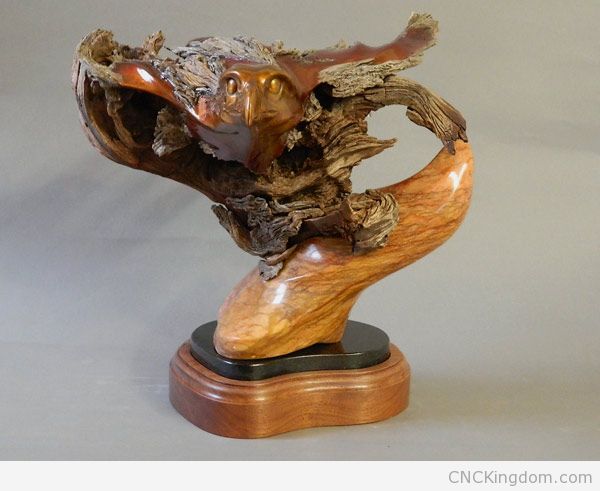
Can you tell me the journey you took while publishing your book Parables Wood Sculptures? Did you always want to write a book showcasing your designs or did it just happen?
Over the years, people would ask if I had a book of my poetry, or if I would consider doing one. I would tell them “That would be tantamount to admitting I was a poet, and in West Texas that could get a guy beat up.”
After enough encouragement in that direction I decided to “get around to it.” One morning in prayer, God very specifically told me to work on the book two hour every morning and have it written by September 17th. I told Him I didn’t have any paper and that the store was closed. Hey, it was a legitimate excuse, I lived on a ranch in the middle of nowhere and the store was closed. A week or so later, I was at church and a young lady I hardly knew asked what I had been up to. As I began to tell her, she stopped me and said these words, ” God has told you to write a book, He has told you to work on it two hours every day and to have it written by September 17th.” My knees went weak, I had not told a soul about the book. I immediately left, went to the store, bought notebooks and went home to write.
 At every publishing house there is a list of thing never to be considered for publishing. At the top of that list are the words “Books of poetry.” I take that back, at top of the list is “Books of poetry with sculpture !!!!!” However, if I footed the entire bill “desk top published”, there were plenty of takers.
At every publishing house there is a list of thing never to be considered for publishing. At the top of that list are the words “Books of poetry.” I take that back, at top of the list is “Books of poetry with sculpture !!!!!” However, if I footed the entire bill “desk top published”, there were plenty of takers.
My First book “Expressions in Wood” was published in 1990 and sold out in two years. Several years later, I tried to re-publish it, but didn’t want to foot the bill. I found that “the list” was still posted over the desk of every publishing editor on earth, I told God, “if You want it re-published, You are going to have to part the Red Sea again, or something of that magnitude.
My second book “Parables Wood Sculpture” was published in 1999 by Fox Chapel Publishers (they footed the bill).
Which woods are the best to work with and why? Are there any woods that you stay away from or aspects of the wood that you just can’t have in any given raw piece?
I prefer West Texas Juniper and Mesquite over all other woods, mainly because that is all that is available in West Texas, and they are some of the most beautiful woods I know of. Also, they are very seasoned or dead standing, when I find them, that is important. Some wood are poisonous, others don’t take a good shine, some actually stink. Mostly I’m just too cheap to pay $10.00 a board foot and then turn 80-90% of it into wood chips. This sculpture “Songbirds on the Wind” (http://www.jchristopherwhite.com/songbirds_on_the_wind.htm) weighed 250 lbs. when we hauled in out of the canyon, it now weighs less than four lbs.

You have some incredible pieces for sale on your website, I also love your works in progress and creating a masterpiece series… I know for my CNC designs, when I’m working on one I’m already imagining ideas for another few and this creativity never seems to end. Do you suffer from the same fate? Never enough time and always more to design?
Yes, I suffer the same fate. If I live to be a hundred, I will only have more ideas to finish than I do now.
Creativity is a mixed blessing to be sure. I just have to be thankful that I can make a living at this, for I would never find the time to bring any of these ideas to fruition, if I didn’t.
Maybe someday I can be independently wealthy and sculpt as a hobby, but, I probably wouldn’t even know the difference. I do frequently thank God for the privilege.
